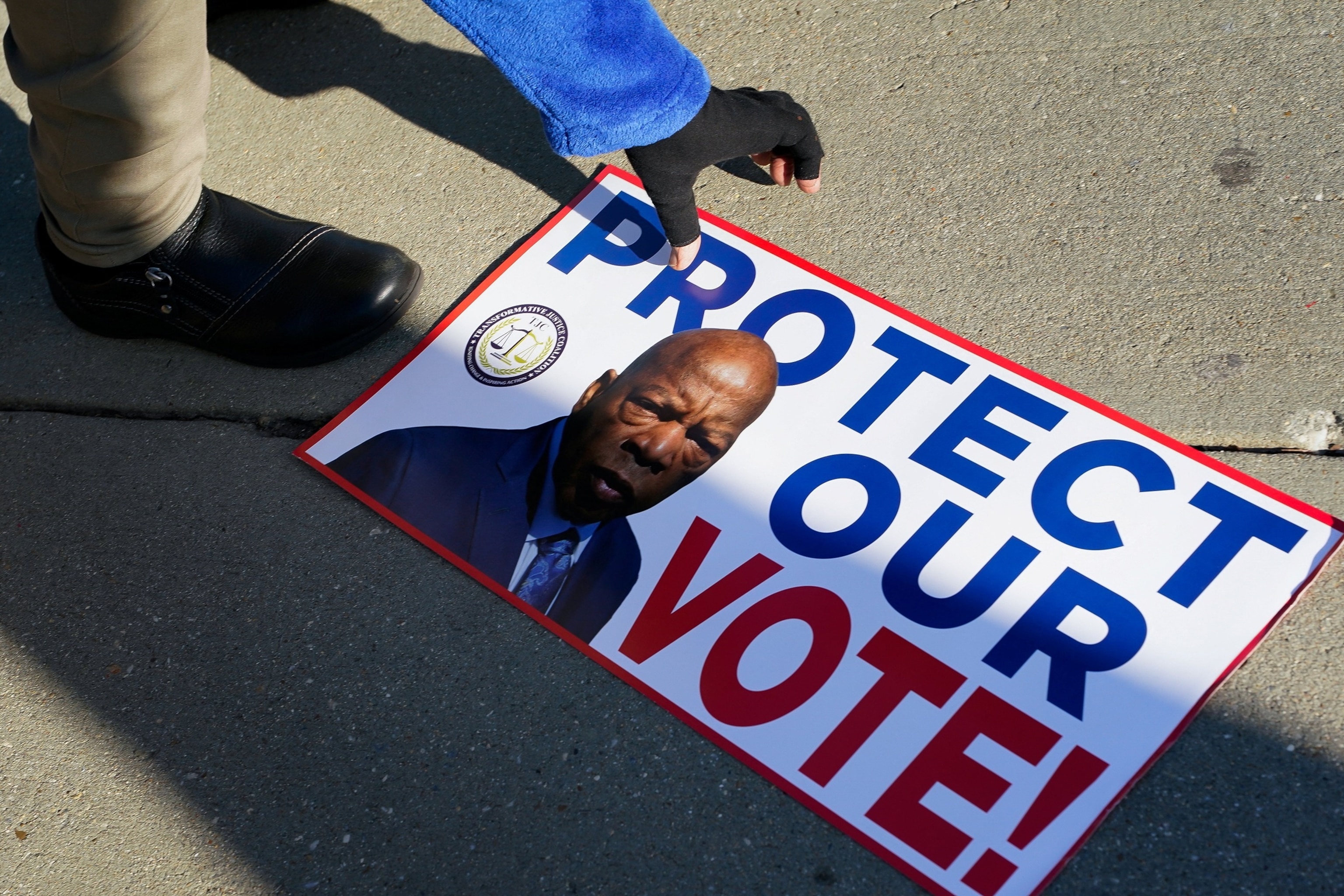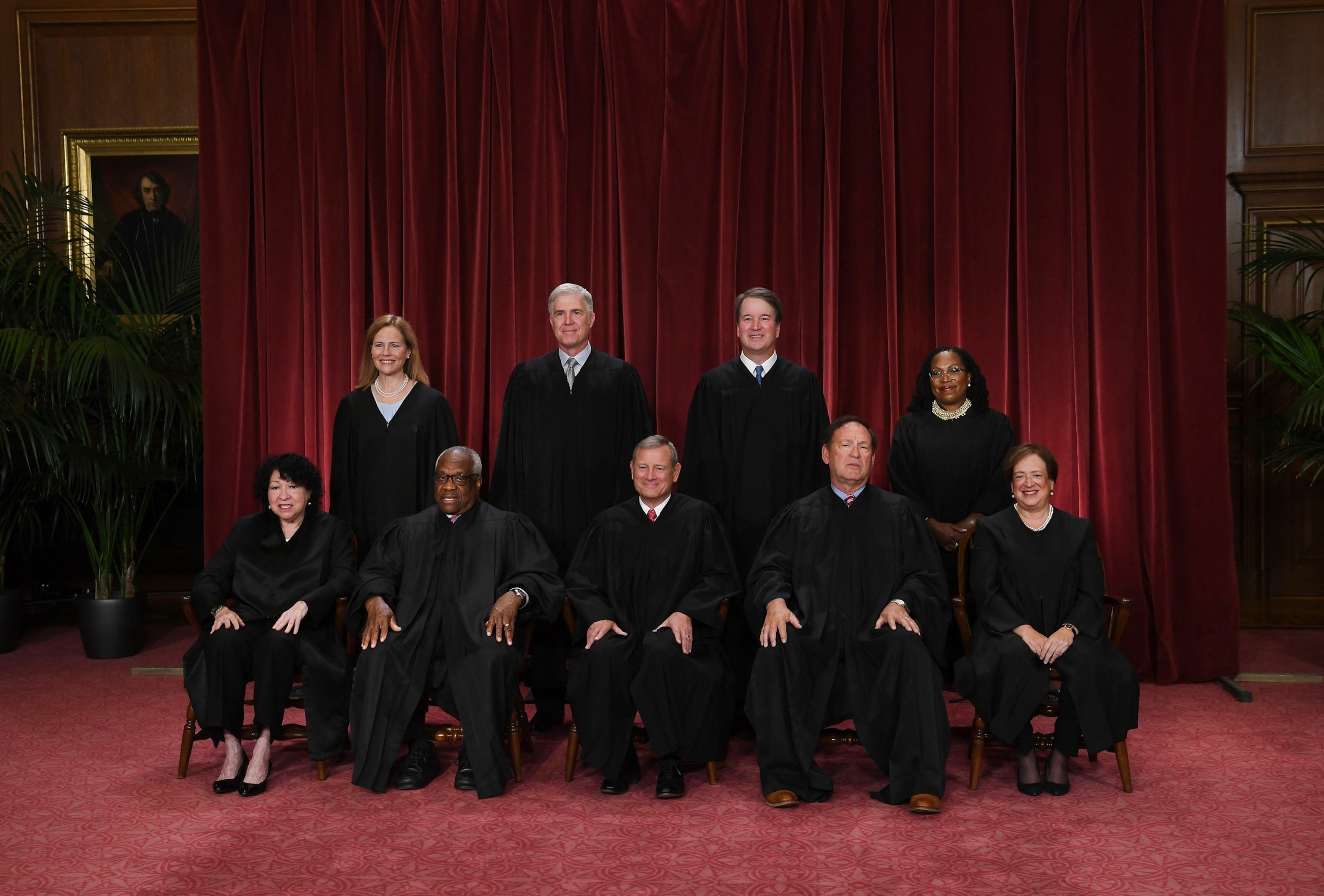The Supreme Court on Wednesday appeared poised to limit how a key part of the Voting Rights Act, long intended to protect equal opportunity for racial minority voters, applies to drawing state electoral maps.
During oral arguments in a complicated case challenging the drawing of a majority-black second district in Louisiana, the court’s conservative majority suggested that race may have been unduly predominant as a factor in its creation.
At the same time, it was unclear whether a majority of the court was willing to issue a more sweeping ruling that any use of race as a factor in redistricting is unconstitutional.

People protest on the day the U.S. Supreme Court hears arguments on the makeup of Louisiana’s congressional districts, in Washington, Oct. 15, 2025.
Elizabeth Frantz/Reuters
Section 2 of the Voting Rights Act has long been a barrier against states that “pack” black voters into districts and “split” communities of color into other districts with the goal of diluting their electoral influence.
Courts that have found a violation of Section 2 then order states to redraw their maps, taking race into account, to ensure that minority voters have fair opportunities for political participation.
The law does not require proof of intent to discriminate — effectively prohibiting any discrimination — but several conservative justices suggested that plaintiffs would have to show at least some possibility of intent, a harder standard to meet.
Justice Brett Kavanaugh, who could be the key vote in the case, expressed particular concern about the open-ended use of race to draw Section 2-compliant maps.
“This court’s cases in a variety of contexts have said that race-based remedies are permissible for a period of time, sometimes for a long period of time, decades in some cases, but that they should not be indefinite and should have an end point,” Kavanaugh said.
“What is not based on case law,” responded Janai Nelson, president and director-counsel of the NAACP Legal Defense Fund, which is defending the Louisiana map, “is the idea that an entire statute should somehow be dissolved simply because race may be an element of the remedy.”

Supreme Court Justices pose for their official photograph at the Supreme Court in Washington, DC, on October 7, 2022. (Seated from left) Associate Justice Sonia Sotomayor, Associate Justice Clarence Thomas, Chief Justice John Roberts, Associate Justice Samuel Alito and Associate Justice Elena Kagan, (Standing behind from left) Associate Justice Amy Coney Barrett, Associate Justice Neil Gorsuch, Associate Justice Brett Kavanaugh and Associate Justice Ketanji Brown Jackson.
Olivier Douliery/AFP via Getty Images
The court’s long-standing precedents have said that race cannot be a primary motivating factor when drawing congressional districts under the equal protection clause of the 14th Amendment, but they also give states breathing room to consider race in order to comply with the Voting Rights Act.
The court most recently upheld Section 2 in a 2023 decision.
“What Section 2 does is say where the effects occur [of a congressional map] are discriminatory in such a way that… African Americans here do not have the same voting opportunities as whites, so a remedy is appropriate,” Justice Elena Kagan told Louisiana Attorney General Benjamin Aguinaga. “That remedy does not have to be based on race, but sometimes it is to correct the situation of racial discrimination that exists.”
Judge Ketanji Brown Jackson forcefully defended the legacy of Section 2 and its use to create two majority-black districts in Louisiana, describing the civil rights-era law as a “tool” for identifying racial disparities.
“It’s like a tape measure that we are looking at [at] “As to whether or not there are certain circumstances, and those circumstances that concern Congress: unequal access to electoral opportunities,” he said. “That’s why it doesn’t need a time limit, because it’s not doing any work other than just pointing us in the direction in which we might need to do something.”
Justice Samuel Alito said openly that he believed lower courts did not correctly apply Supreme Court precedents surrounding Section 2 to the maps at issue in Louisiana.
“There is serious doubt as to whether the black population within the district concerned on the illustrative map was geographically compact,” he said, referring to one of the legal requirements for a VRA-compliant map.
A decision in Louisiana’s favor could, at a minimum, require the state to redraw its map under more race-neutral criteria before the 2026 midterm elections. The two majority-Black districts are represented by Democrats.
A broader finding in the case could alter congressional maps across the country, potentially triggering racially neutral redistricting in several states and, in turn, jeopardizing minority representation in legislatures across the country.
Nelson argued that a further repeal of the Voting Rights Act would be “catastrophic.”
“If we take Louisiana as an example, every black member of Congress was elected in a VRA opportunity district,” he said. “We only have the diversity we see in the South, for example, because of litigation that forced the creation of opportunity districts under the Voting Rights Act.”
The court is expected to issue a decision before its term ends in June 2026. How quickly it releases its ruling could determine whether states will have enough time to redraw maps, if necessary, before midterm voting begins.






